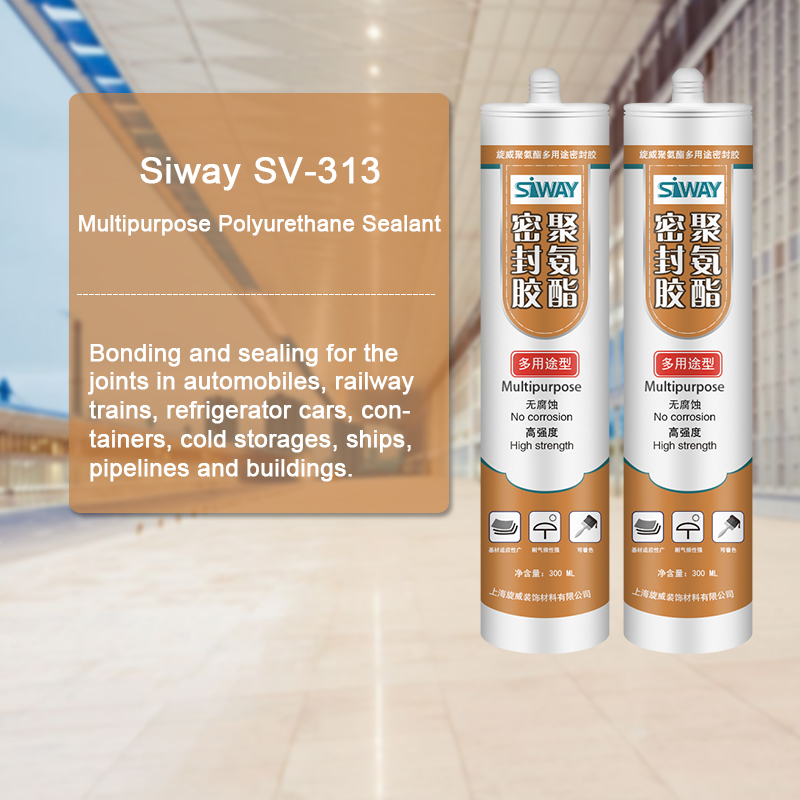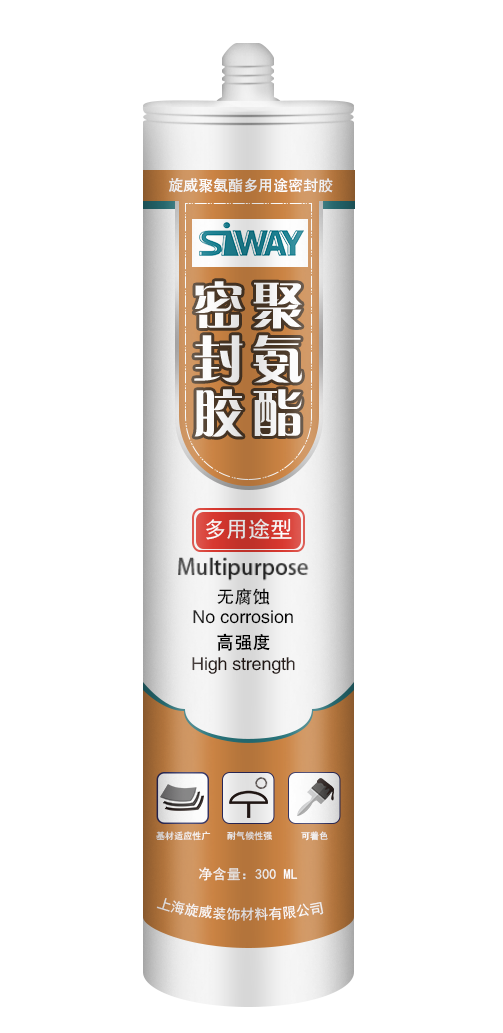China Manufacturer for SV-313 Multipurpose Polyurethane Sealant Export to Doha
Short Description:
Description SV-313 is one-component, room temperature curing polyurethane sealant with good adhesive property. It has many advantages such as high strength, good elasticity, aging resistant, vibration exhaustion resistant, low temperature resistant, paintable and convenient to use, etc. Where to use Bonding and sealing for the joints in automobiles, railway trains, refrigerator cars, containers, cold storages, ships, pipelines and buildings. Characteristic a. Fast curing under r...
In order to give you convenience and enlarge our business, we also have inspectors in QC Team and assure you our best service and product for China Manufacturer for SV-313 Multipurpose Polyurethane Sealant Export to Doha, Our mission is to help you create long-lasting relationships with your clients through the power of promotional products.
Description
SV-313 is one-component, room temperature curing polyurethane sealant with good adhesive property. It has many advantages such as high strength, good elasticity, aging resistant, vibration exhaustion resistant, low temperature resistant, paintable and convenient to use, etc.
Where to use
Bonding and sealing for the joints in automobiles, railway trains, refrigerator cars, containers, cold storages, ships, pipelines and buildings.
Characteristic
a. Fast curing under room temperature , no sagging, solvent free
b. High adhesive strength, wide application range for base materials
c. Good chemical and water resistance
d. Excellent aging resistance
e. Excellent noise, vibration and impaction resistance
f. Good damp resistance and anti mildew
g. Paintable, abrasionable
Technical Data
| Item | Index | Test method | |
| Appearance | Grey, White paste | Black past | By eyes |
| Hardness, Shore A | ≥35 | ≥45 | GB/T 531.1-2008 |
| Sagging, mm | ≤3.0 | No | GB/T 13477.6-2002 |
| Solid content, % | ≥95 | ≥96 | GB/T 2793-1995 |
| Tack free time, Min | ≤120 | ≤60 | GB/T 13477.5-2002 |
| Curing rate, mm/24h | ≥3.0 | ≥3.0 | |
| Shear strength, Mpa | ≥0.8 | ≥2.0 | GB/T 7124-2008 |
| Tensile strength, Mpa | ≥1.5 | ≥2.5 | GB/T 528-2009 |
| Elongation at break,% | ≥450 | ≥400 | GB/T 528-2009 |
| Tensile strength at 100%, Mpa | ≥1.0 | ≥2.0 | GB/T 528-2009 |
| Tear strength, N/mm | ≥5.0 | ≥5.0 | GB/T 529-2009 |
Color
White, black, grey
Package
300ml plastic cartridges and 600ml in sausage
Shelf life
9 months
Note
If you want the TDS or MSDS or other details, please contact with our sales person.
You can view photos of the porch that were taken March, 2013.
https://s1281.photobucket.com/user/768kayshan/library/?sort=3&page=1
It’s been almost 2 years, & this faux application has held up well to both weather & daily use.
Think of this project as being like a texture paint application using a mix of vinyl concrete patcher & dye.
Materials I Used:
- Dust mask & gloves
- Mixing buckets & spatulas/scrappers
- Paint brushes (One extra soft bristle brush for cleaning off faux bricks/stone after peeling up tape).
- Paint Stripper
- Heavy duty power washer
- Vinyl concrete patcher (this was the only type of concrete mix used for entire project)
- Cement dye (Red, Buff, & Charcoal)
- 1/2″ masking tape ( I found this tape at an auto body repair shop).
- Concrete bonding agent
- Concrete sealer
- Heavy duty exterior white paint for the foundation & porch posts.
Steps:
- Apply paint stripper to loosen old paint on porch & then remove all old paint w/ a heavy duty power washer (I rented mine at Home Depot’s tool rental).
- After porch is clean & dry apply the concrete bonding agent. Allow it to dry according to instructions on bottle.
First Layer:
- The first layer will become the color/texture of your faux grout lines. If you have a cement surface that is in good condition I would clean it, apply bonding agent, & after it is dry tape out the pattern for your brick or stone layer. In other words, your original surface will become your grout lines. If you have any cracks or slight dips you can repair them w/ this first layer application of vinyl concrete patcher. Vinyl patcher is stronger than regular cement & will maintain its strength w/ a layer spread as thin as 1/16″ thick(my personal experience w/ this product). Mix Vinyl patcher w/ water (follow directions on bag). The natural color of this product is light grey(or could also be white..so read the bag before you buy). No need to dye this first layer if you like its natural color for your grout..I didn’t dye mine. Apply a thin, smooth, flat layer, & allow to dry. Once dry, if you accidentally have any spots that are too high or pointy you can file them down w/ a cement grinder…but, overall, it may not be necessary since you should be able to blend in slightly high or pointy spots w/ your next layer of faux brick/stone.
- Tape out any pattern you like.
Second Layer:
- Mix some vinyl patcher w/ whatever color dye you like. This will vary depending on what kind of stone/brick design you want on your porch. For example, I mixed one bucket of red dye & a separate bucket of buff dye for my bricks. I then scraped on a thin layer of red & then a thin layer of buff on top (or you can do vice versa), all while cement was wet..this mix of layering the two colors gave the bricks each their own individual & more natural look. Also, keep in mind that your wet cement will become several shades lighter after it dries.
- Allow your cement to dry to a soft, dry, dough-like consistency.. something similar to a raw pie shell dough (If it’s too wet, too much of your cement will pull off w/ the tape. If it’s too dry, you’ll have a difficult time pulling the tape off). Gently & slowly pull up the tape, & gently brush away the little pieces of debris using a VERY soft bristle brush (invest in a well made soft bristle brush..cheap, rough, brushes will drop bristles in your work & may leave brush textures on your concrete).
- Let your handy work dry over night..then apply a couple of coats of sealer to your entire project..make sure your sealer is specially made for fresh concrete work..some sealers can’t be applied until 90 days after your concrete cures. After 90 days, you can also apply a 90+ day sealer.






